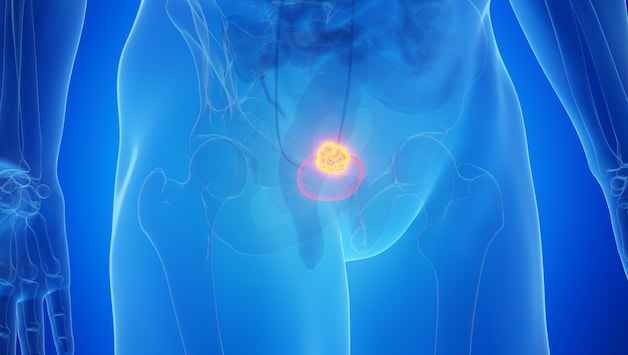It is the type of cancer that largely affects men. But for this very reason, women in particular are at risk of a misdiagnosis when it comes to bladder cancer. There is one clear symptom that should make doctors pay attention.
With 31,000 people affected in Germany alone, bladder cancer is the 10th most common type of cancer. It mostly affects men and people over 70 years of age. This and the fact that the symptoms are often difficult to assign leads to a number of misdiagnoses which, in cases of doubt, can even cost lives.
In a comprehensive survey by the World Bladder Cancer Patient Coalition, it became clear that women and people under the age of 55 are particularly affected by these misdiagnoses. Women are twice as likely to be misdiagnosed with another disease first. Of those surveyed, 18 percent of women with bladder cancer said they had seen a doctor at least five times before their symptoms were taken seriously and they were referred to a specialist.
“It is assumed that younger women do not get bladder cancer, but I have treated many women who were diagnosed between the ages of 20 and 30,” says oncologist Alison Birtle, who specialises in urological cancers, to the Daily Mail. The blanket assumption that women under 45 do not get bladder cancer is based on very old data. We must finally take into account that anyone can get the disease.
But too often the symptoms are misunderstood and a urinary tract infection is diagnosed instead of cancer. This is also the story of Helyn Glover, who visited her GP in 2019 because of blood in her urine. “I remember once giving my GP a urine sample that was just pure blood,” says the now 58-year-old. Instead of seeking further tests, the doctor diagnosed her with post-menopausal bleeding. “I was told that there was no need to worry.”
It wasn’t until three years later that cancer in her bladder was discovered by chance during an examination of her uterus. In January 2022, she was diagnosed with bladder cancer and subsequently underwent surgery and chemotherapy. Although she is now cancer-free, doctors tell her that the cancer will likely return. “I can’t help but think that things might be different if it had been detected earlier,” says Glover.
Overall, awareness of the symptoms that indicate bladder cancer is still very low. This is also what the study by the World Bladder Cancer Patient Coalition finds. 54 percent of those surveyed said they did not know about signs and symptoms. In addition, according to the German Cancer Research Center, typical symptoms of the early stage are quite unspecific.
For oncologist Birtle it is clear that further tests must be initiated as soon as “a single drop of blood is found in the urine”. The German Cancer Aid also calls discoloration in the urine a sign “that should always be taken seriously.”
Awareness of symptoms can reduce the likelihood of mortality. The results of the survey postulate that a delayed diagnosis makes a complete cure more difficult. Women in particular are often caught in a dangerous cycle of misdiagnosis and delayed treatment, says Lydia Makaroff, executive director of the charity Fight Bladder Cancer.
This could also be an explanation for the higher mortality rate among women. While men are three times as likely to be affected by bladder cancer, women have a lower 5-year survival rate: in Germany this is 46 percent. For comparison: for men it is 58 percent. The team behind the survey blames late diagnoses and often more advanced stages of cancer in women.
“Women wait longer for a diagnosis than men, with younger women waiting the longest,” says Makaroff. In case of doubt, this leads to severe disease progression, which is why tests appropriate to the symptoms must be carried out. This is also the conclusion of the survey: There is an urgent need to improve bladder cancer diagnosis for women.









